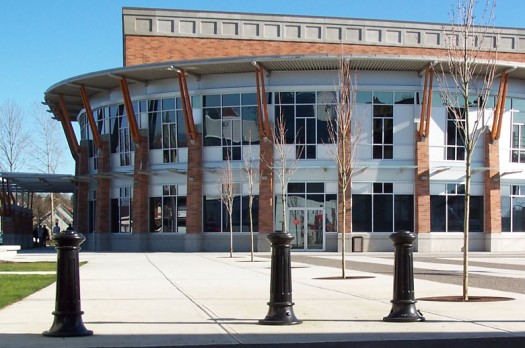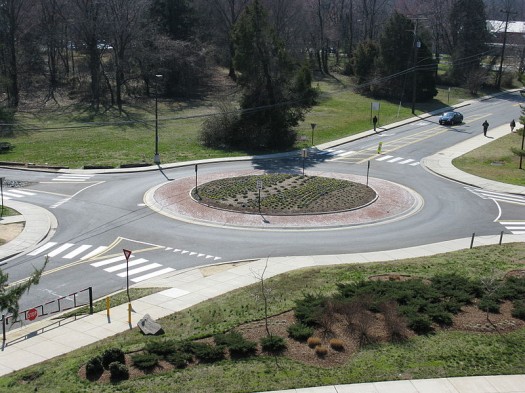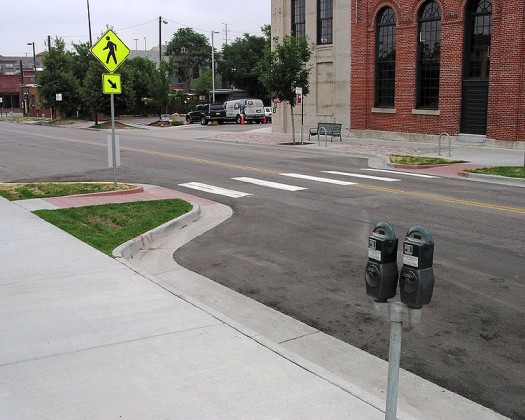The art of traffic calming
In the view of most urbanists, walkability is a measure of how healthy a city is. It essentially describes how safe and how well-planned a city is for pedestrians, which will in turn determine how often citizens interact with their city.
There are so many factors that go in to making a city walkable. The factor that I find to be the most important, in pretty much all cases, is how safe the walkways are in terms of traffic.
Traffic calming methods become incredibly important when improving an urban space.
Wait, what’s wrong with stop signs?
Conventional wisdom holds that stop signs and speed bumps are the way to calm traffic. But debunking this kind of thinking is as easy as recalling behavior at either of these implements. The abundance of rolling stops and mistaken traffic order at stop signs is as common as hurtling over speed bumps as though they aren’t even there.
If you prefer hard facts, take a look at the literature that has been released concerning the efficacy (or lack thereof) of stop signs and lights. While these tactics do protect pedestrians to an extent, they aren’t very effective at inducing safer roadways in terms of traffic flow.
The new age of traffic management is not only safer, but also more aesthetically pleasing.
Safe pedestrian areas: Bollards and buffers
For truly optimized walkability, there need to be pedestrian-friendly destinations as well as pedestrian-friendly routes to get to them. Protecting pedestrian areas doesn’t need to be as unappealing as setting up chain link fences or Do Not Enter signs.
Bollards and planters are both used to make sure cars can’t access certain areas and to protect pedestrians. Bollards can be either fixed or removable, allowing for a flexible space that can be cordoned off for street fairs and other events. Buffers are areas that separate roadways from walkways. Buffers can also be used in the process of beautifying a city by turning a buffer into a planting strip of trees or flowers.

Improving flow: Traffic circles and roundabouts
While roundabouts and traffic circles are proven to mitigate speeding and traffic collisions, their benefit to pedestrians and cyclists is less certain. One of the major selling points of these structures is that it manages the flow of traffic without requiring it to stop. Putting pedestrians into that equation necessitates traffic to stop to allow crossings.
While there are certainly risks to having pedestrians crossing at roundabouts, there are also many benefits in terms of increasing awareness and in managing congestion.
Visually, both traffic circles and roundabouts create amazing opportunities for beautifying natural areas or display of statues and fountains. Opportunities for local culture abound.

Changing lanes: Diets, chokers, and curb extensions
Perhaps the most challenging aspect of using traffic calming to make a place is trying to get pedestrians, cyclists, and cars to cohabitate peaceably. An important element of making roads safer and friendlier to non-vehicles is managing the size and shape of lanes. Most car-dependent people balk at the idea of reducing the flow of traffic, but it’s an effective way of mitigating speed.
Diets entail the closure of a lane in order to make more room for bike lanes and sidewalks. This necessitates a certain amount of congestion, but the measure does mean that there will be slower vehicles and therefore fewer dangers to everyone. Curb extensions work double duty, giving pedestrians extra space for protection and visibility while also slowing the speed of turning cars. Chokers are one of my favorite traffic calming measures because they’re not only effective, but also visually striking. They simply divert traffic around a small area, combining the concept of curb extension with that of road diets by narrowing a single lane by adding a small amount of extra curb.
With these methods combined, cars become less featured in a place by shifting focus to safety and walkability.

Implementation
For young or small cities, implementing an intelligent traffic calming system should be a matter of planning and growth. While it isn’t always easy to anticipate where businesses will set up shop or where residential areas will become most popular, city planners can design roadways in a way that makes these developments intuitive.
For larger cities, however, implementation might be a rather sizeable challenge. Challenges include not only the usual construction considerations of weather and budget, but also the additional obstacle of needing to shunt traffic to other roadways while work is being done. Especially for a populous city, denizens might not be thrilled about the prospect of losing lanes and/or speed. But these changes will benefit a community’s ethos, its longevity, and its bottom line.
Traffic calming can create an environment that will foster engagement in the community by providing safety and convenience to pedestrians and cyclists. Not only will this encourage a healthier lifestyle by allowing more walkability, but it will also protect the environment and increase the economic viability of an area. When your goal is to make an area into a “place”, there are few things more straightforward to address than traffic calming.
–Robert Dalton
Robert Dalton is a freelance writer, design specialist, and student of urbanist history. His interests lie primarily in nurturing walkable cities that encourage community involvement and sustainable economies. He lives in Portland, OR, one of the most walkable cities in the country, from which he draws inspiration every day. This article first appeared on the Placeshakers blog.
For more in-depth coverage:
• Subscribe to Better! Cities & Towns to read all of the articles (print+online) on implementation of greener, stronger, cities and towns.
• Get New Urbanism: Best Practices Guide, packed with more than 800 informative photos, plans, tables, and other illustrations, this book is the best single guide to implementing better cities and towns.




